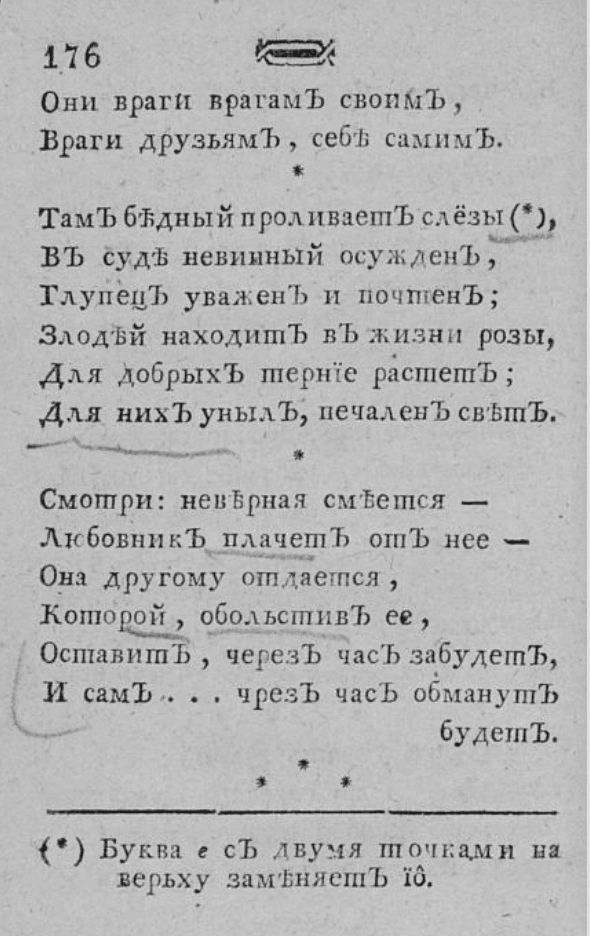Ekaterina Romanovna Dashkova, an associate of Catherine II, who headed the St. Petersburg Academy of Sciences, is often called the inventor of the letter “Y”. We decided to check if this is true.
November 29 is considered by some to be the “birthday” of the letter e. It is alleged that it was on this day in 1783 that Princess Dashkova invented a new letter. About this wrote in the book “Two Centuries of the Russian Letter Y”, historian Evgeny Pchelov and publicist Viktor Chumakov, who called himself “the main efictor of Russia.” This version appears regularly in media, with wordings like “Dashkova proposed replacing the combination “io” with a new letter “e”.” Other called Such statements are a myth and expose the yofists.
For the first time, Ekaterina Romanovna Dashkova, who at that time occupied not only the position of director of the St. Petersburg Academy of Sciences, but also the chairman of the Imperial Russian Academy (the main department for literature), actually spoke about the need to convey the sound [jo] in writing. November 18 (29), 1783, at the fourth meeting of the Academy, Princess Dashkova pointed out to those gathered, that “it is imperative to introduce a new letter iô or iôt to express words and reprimands beginning with this consent.” And she gave several examples: matioryy, iolka, iozh. Then the proposal had to be approved by Metropolitan Gabriel of Novgorod and St. Petersburg. A week later, at the next meeting, Ekaterina Dashkova announced that “the Academy considered it necessary to adopt a new letter into our alphabet that would express iota.”
The role of Princess Dashkova is limited to this; at other meetings the issue of a new letter was no longer discussed. In any case, there is no mention of this among supporters of any of the versions of the origin of the letter “e”. In the Academy's dictionary, Dashkova's main brainchild, we we meet spelling “Hedgehog” and “Iozh” (in the second case we are talking about a sea urchin). After a few pages - “Spruce, Christmas tree,” without any additional diacritics.
There are two common legends about the appearance of the letter e. First readsthat Dashkova liked the lettering on the bottle of Moët et Chandon champagne. By the way, there is no such separate letter in the French alphabet; in the case of “Moet” we are talking about diaeresis (aka trema), a diacritic sign signaling the separate reading of adjacent letters. Second version, somewhat more plausible - about the borrowing of two dots from the German language, the so-called umlaut. True, in German there are only ö, ü, ä. But there is no documentary evidence for this version either, only guesswork.
A special letter for the sound [jo] did not appear in print for more than ten years. Traditionally countsthat Nikolai Karamzin was the first to type the letter e. According to another version, this was done by the poet Ivan Dmitriev in 1795. However, Dmitriev in the book “And my trinkets”, published by the printing house of Riediger and Claudia, has a corresponding sound transferred with the combination “ïo”:

It is curious that in the same book meets and the spelling "vasilechik".
The first documented appearance of “е”, that is, the letter “e” with two dots, dates back to 1797. In the second volume of the book “Aonids, or a collection of different, new poems” Karamzin uses the word “tears”, rhyming it with “roses”. Moreover, he considers it necessary to explain in a separate note that the letter “e” with two dots at the top replaces “ïô”.

Thus, we know that the idea to create a new letter really belongs to Princess Dashkova. At the same time, it is unknown who exactly came up with the idea of conveying the sound [jo] with the symbol “ё”: perhaps it was Dashkova, but no evidence of this has been found to date. Therefore, primacy, until the contrary is proven, remains with Karamzin, who was the first to use the letter “e” in his book.
Cover image: Wikipedia.
Most likely not true
If you find a spelling or grammatical error, please let us know by highlighting the error text and clicking Ctrl+Enter.






